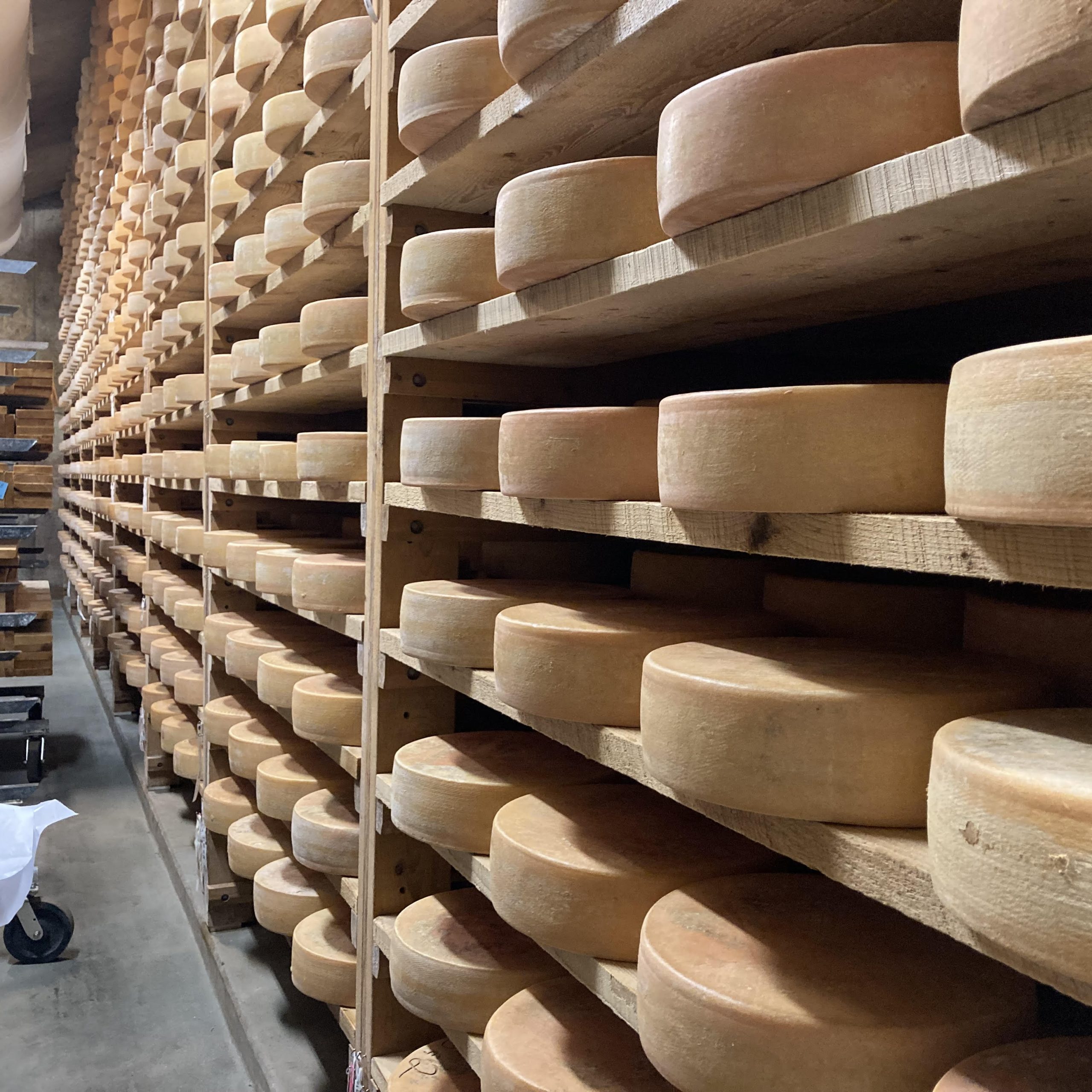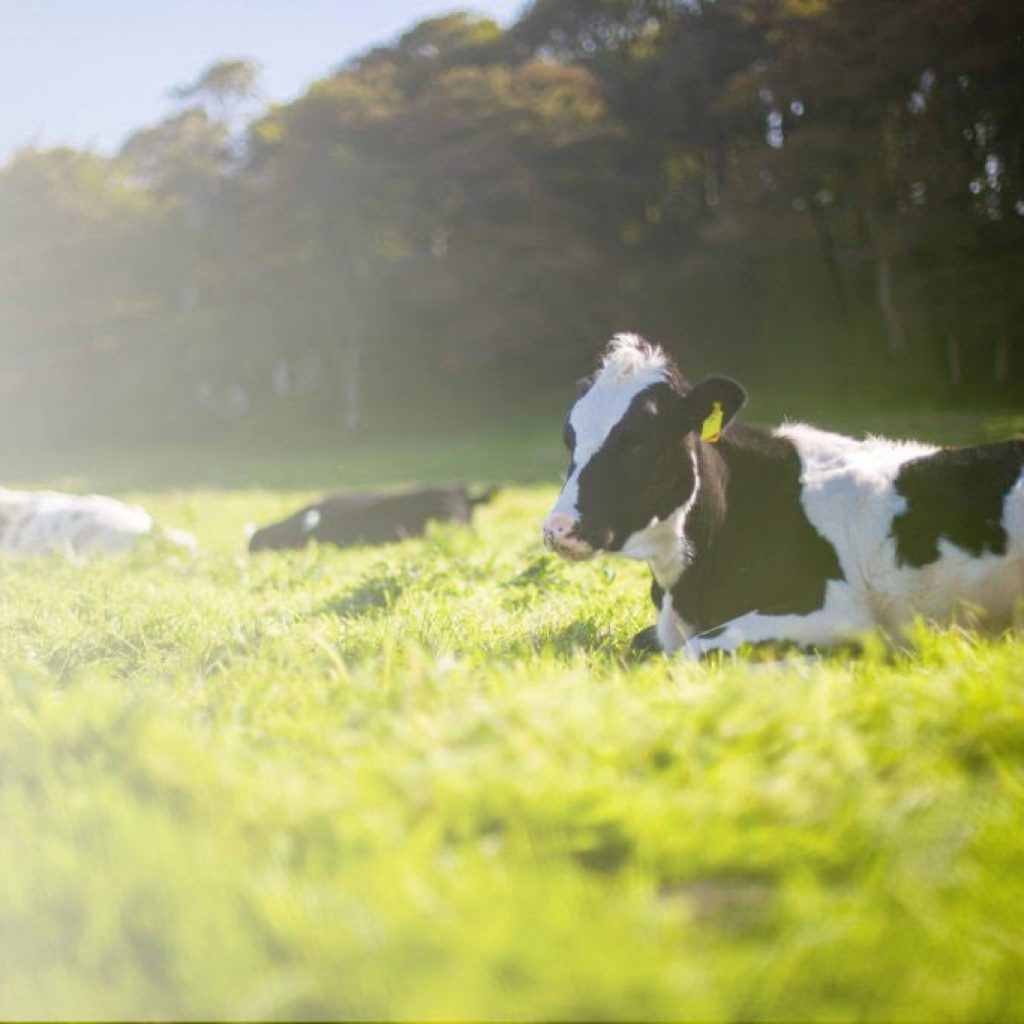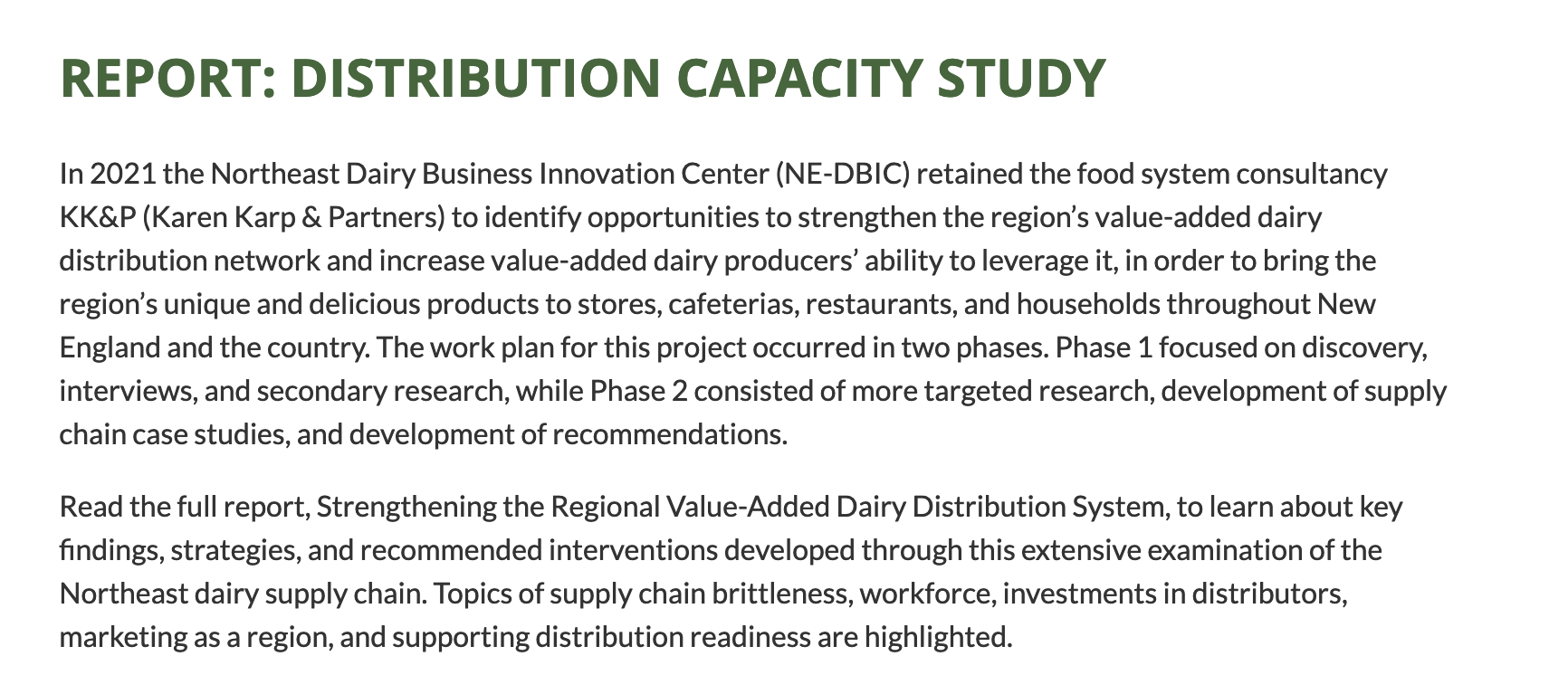
Regionally and nationally, fluid milk consumption has been declining steadily for years, yet overall dairy consumption has actually increased, and that growth is projected to continue. This is largely due to increased consumption of cheese, butter, and other value-added dairy products. For example, in Vermont (New England’s highest producing dairy state), cheese production represents the largest share and approximately half of the dairy industry’s $1.3 billion annual contribution to the state economy. Because of this, and because of the strength of New England’s value-added dairy product reputation across the nation, the value-added dairy sector represents a significant opportunity for New England’s dairy farmers.
Over the course of the past year, KK&P has undertaken two projects in partnership with the Northeast Dairy Business Innovation Center (NE-DBIC) to ready the region to realize that opportunity. One project focused on understanding the conditions necessary for dairy farmers to sell their fluid milk to regional artisanal cheese producers and leverage these shifting market opportunities. The other project focused on opportunities to strengthen the regional value-added dairy distribution system to bring finished value-added dairy products to market.
Housed within the Vermont Agency of Agriculture, Food and Markets (VAAFM), the NE-DBIC was launched in February 2020 as one of the inaugural USDA Dairy Business Innovation Initiatives in the nation. It serves a ten-state region that includes all six New England states, as well as Delaware, Pennsylvania, New Jersey, and New York. The NE-DBIC’s investments and projects promote “innovation and resiliency for regional production of dairy products.”

Challenges Facing Small Dairy Farmers Today
That mission matters, as significant trends loom over the dairy sector today. In addition to the decline of fluid milk consumption, dairy farmers are up against fluid milk base prices that almost never exceed production costs, complex inter-state regulatory frameworks, labor challenges, and continual consolidation of distribution and processing networks. These sector dynamics play out at the national level and are felt acutely in the Northeast and in New England in particular, where the dairy industry is comprised of far more small farms than in other parts of the country.
These dynamics were exacerbated in New England in the fall of 2021 when two major processors—Danone (Horizon) and Maple Hill Creamery—announced the termination of their contracts with close to 130 regional organic dairy farms. While neither of KK&P’s research projects were initiated directly in response to this seismic market shift, we worked closely and collaboratively with our client to ensure that both projects responded to it.
Adaptation: Transitioning to New Markets
Beginning last fall, KK&P conducted research to understand specific conditions that must be in place for regional dairy farmers to sell their milk to specialty cheesemakers in Vermont and Massachusetts, in order to diversify their income streams beyond commodity milk markets.
We conducted in-depth interviews with four specialty cheesemakers (two each from Vermont and Massachusetts), all of whom were actively interested in building more localized milk supply chains. We then gathered information from 17 dairy producers through a mix of in-take forms, detailed surveys, and follow-up interviews focused on farm practices, feed and breed characteristics, milk specifications, production capacity, storage and infrastructure capacity, contract requirements and preferences, needs for support, and general assessments of the risks involved in engaging in local business relationships (a set of topics that mirrored the information gathered from cheesemakers.)
In addition to approximately 15 specific and potentially immediate supply chain matches that were identified with the research, the KK&P team found that there is ample interest from both cheesemakers and farmers to make these new supply chain relationships possible. Notably, all the cheesemakers were ready and willing to purchase milk from farms while those farms transition towards the cheesemakers’ desired farm practices. To secure these relationships, concerns from both sides about demand and supply volatility will need to be addressed; new contract terms will be needed that build on the trust and deliver the stability that both sides crave; and infrastructure investments on-farm, at creameries and in the transportation sector (for hauling fluid milk), will be needed.

Distribution: Untangling the Challenges and Uncovering the Opportunities
While our dairy distribution sector research focused on value-added product, not fluid milk transport, a number of themes and findings crossed over. This body of research sought to identify opportunities to strengthen the region’s value-added dairy distribution network and increase = producers’ ability to access it to bring the region’s unique products to stores, cafeterias, restaurants, and households throughout New England and the country.
With advisors on our team from HDR (a design firm specializing in logistics services) and Establish, Inc. (a supply chain focused management consulting firm), we conducted dozens of interviews with people across the value-added dairy supply chain (from cheesemakers to distributors to specialty food shops to grocery chains to marketing experts). We conducted an in-depth literature review. We developed five supply chain case studies that highlight key themes from our research. And we conducted a workshop to field-test draft recommendations against an audience of stakeholders (from across the region and across sectors) who may play a future role in implementation, as partners or advisors.
Overall, the study found that there is no single standout infrastructural node, logistics asset, or mechanical solution to the distribution challenges that value-added dairy producers face. Distribution challenges (and the flipside of that coin: distribution opportunities) are comprised of a nuanced and entangled web of factors including advanced technical excellence in production, product uniqueness, careful matching of right product to right market, strong partnership with supply chain partners and buyers, access to capital and labor, and creativity.
Recommendations: Building Resiliency
Our team developed five recommended strategic directions— each with specific programmatic or infrastructural interventions (detailed in the report): build resiliency, grow the workforce, invest in existing distributors, market as a region, and support distribution-readiness.
Taken together, the recommended strategies and interventions intend to create greater market access and reduce the brittleness that exists in the current distribution system, with the goal of building up an accessible distribution system that contributes to a more resilient regional value-added dairy industry.
In February 2022, the USDA announced a commitment to invest an additional $80 million in the nation’s Dairy Business Innovation Centers. We are proud to have completed research that will help inform the next set of investments that the NE-DBIC makes in this critical—and delicious!—industry.

